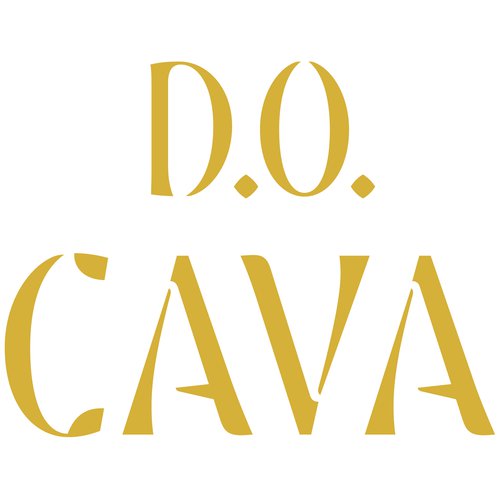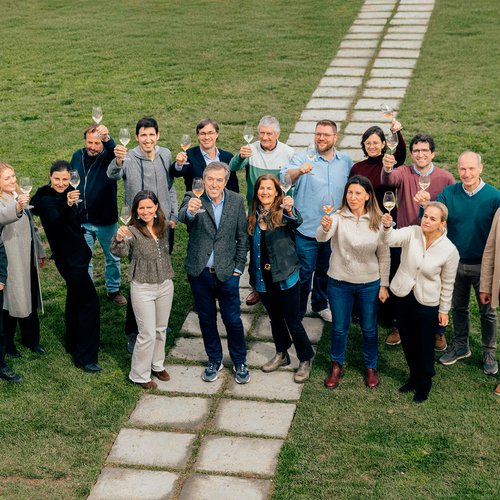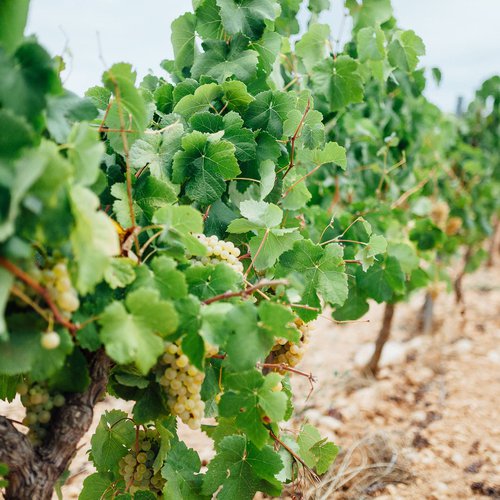The traditional method behind Spain's top sparkling wine
One of the lesser-known aspects bringing together two great sparkling wines that are Cava and Champagne is a humble cork harvested from the cork oak tree. Native to the western Mediterranean basin, it can be found in different countries in northwest Africa and southwest Europe, but it is cork oak forests of Portugal and Spain that are responsible for over 80% of the world’s cork production. Zoom into the north-west part of the Iberian Peninsula, and you will find yourself in La Selva and Empordà regions, the cradle of cork production in Catalonia, the industry dating back to the second half of the 18th century. It was initially carried out in small traditional workshops, and the sales mainly focused on the French still and sparkling wine market. The cork stopper quickly became the trusted guardian of the Champagne, and cork traders in that area turned into their main suppliers. The awareness about the French sparkling wines spread out across Catalonia since the 18th century, with Catalans embarking on experiments with their own Méthode Champenoise sparklers a few decades later and giving the world Cava in the second half of the 19th century. Champagne and Cava fates were hence sealed by the cork, and by the traditional method of production. Let us discover its most artisanal qualities in the Cava production.
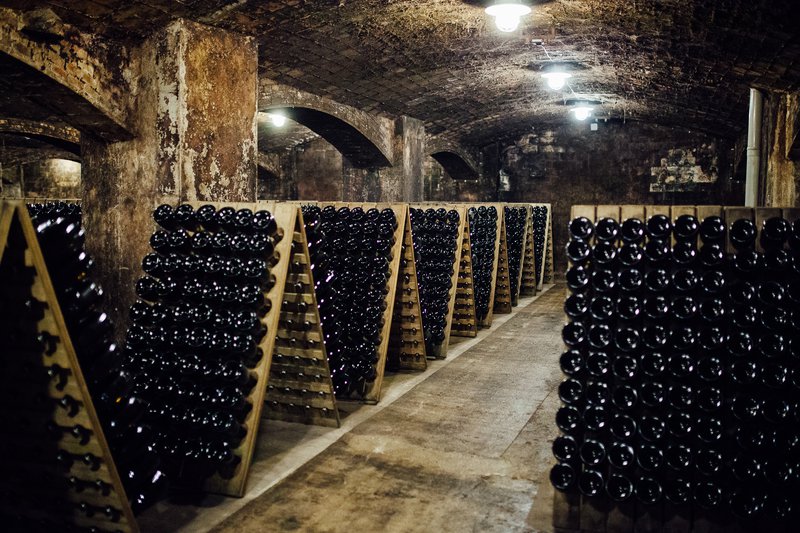
The most meticulous way of making wine sparkle, the traditional method involves a secondary fermentation inside the bottle, that creates the bubbles and gives the best Cavas their unique flavour profile. To fully understand the full scope of this process and the resulting complexity of Cava, we need to go back to the roots of it all that lie in the Cava vineyards. Different growing altitudes ranging from 200 to 800 metres and geography spreading from the Mediterranean coastline to the inland areas are home to nine DO-authorized grape varieties, all harvested and transported to cellars with the utmost care and respect to ensure the best quality for the first fermentation. Yields and age of the vineyards are strictly regulated, and if we look at the top quality tier for Cava, the single-vineyard Cava de Paraje Calificado, vines should be at least 10 years old and have to meet rigorous yield requirements.
Once the freshly-picked grapes reach the cellars, the process of Cava making begins, transforming the grapes first into must and then into wine. After destemming and light crushing, the must is extracted by gentle pressing. Grape pressing to produce a high-quality sparkling wine is a delicate process requiring extensive experience and know-how. Its equipment covers a wide spectrum of requirements and has developed continuously over time. Historically, traditional vertical fixed-basket presses were used — in Champagne, they still account for about a third of all Champagne grapes pressed —, that were later gradually replaced or complemented by different types of more modern horizontal pneumatic presses. The latter are now the main press type used in Cava, although the historic vertical press can still be found in some of the top Cavas production. Different pressing techniques allow for the different qualities of juice, with making distinction between the “cuvée” (the first pressing) and the “taille” (second pressing), and Cava having a special term for the free-run juice, that flows freely from the grapes loaded into the press: “Mosto Flor”.
The must is then clarified to be fermented and made into the still base wine for Cava. These fermented wines will form the desired Cava coupage, carefully created using the art of assemblage, or blending. Cava makers and oenologists rely on this skill of combining wines from different vineyards, villages, years — one can enjoy vintage or multi-vintage Cava —, fermentation vessels and of course, grape varieties, with the most common and traditional Cava blend being that of Xarel·lo, Macabeo and Parellada. The blending stage can take up to several months, before just the right mix of all elements is finally found, and a single blend can comprise dozens of individual wines. A true mixture of alchemy and the tightrope walking, standing for weeks of work and numerous tasted base wines, it is a founding stage that gives identity to the highest-quality Cavas.
Magic and alchemy do not end with blending: in the next stage our still wine will become sparkling, combining tirage (bottling) and secondary fermentation in the bottle, producing carbon dioxide. The newly-blended Cava cuvée is bottled with addition of a liquid solution of yeast, wine and sugar, known as “liqueur de tirage” in French, or “licor de tiraje” in Spanish. Today, the addition of liqueur de tirage in Cava is calculated with utmost precision to produce a well-calculated increase in pressure inside the bottle, but before Louis Pasteur’s revolutionary discovery and before the early 19th century advancements in bottle technology many broken bottles were a result of a rather ad hoc process and loose proportions in which the mixture was added.
Once the bottling is completed, bottles of Cava are stoppered with either crown cap or sometimes natural cork and stored horizontally until the fermentation has produced the required bubbles and pressure, and the Cava is aged for a desired period of time. DO Cava prescribes the minimum ageing of nine months, but Premium category Cavas including Reserva, Gran Reserva and Cava de Paraje Calificado can at times reach several years of laying down in the quiet of Cava cellars. With the bottles embarking on a lengthy period of maturation, the lees, or dead yeast sediments, in the bottle contribute to the resulting wine’s profile in the process known as autolysis.
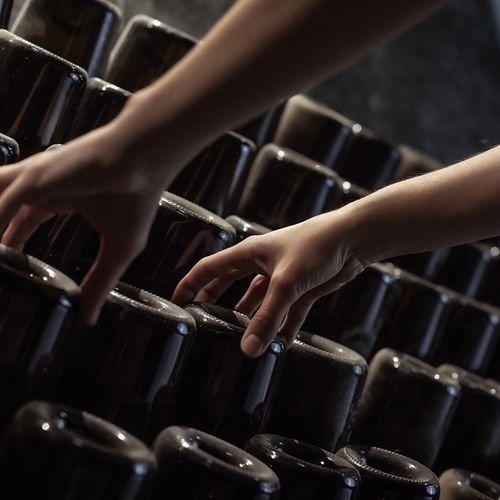
One of the most cumbersome and certainly one of the most artisanal stages in the traditional method is the ridding process. Necessary to help remove the dead yeast and riddling agents sediments, it entails rotating the bottles by small increments, gradually turning them from the horizontal to the vertical position, so that they finish neck-down. Both in Cava and Champagne, riddling can be performed manually or mechanically, using girasol or gyropalette machines in the latter case. In the traditional manner, it is the professional riddler, or “remueur”, who manually turns the bottles on a wooden pupitre (the A-frame-shaped riddling rack). This age-old technique still preserves century-old traditions, such as making the rotating stages with a chalk mark on the bottom of the bottle for the reference. An unhurried process, manual riddling in Cava typically takes 2-3 weeks, with an average of about 20 turns performed on each bottle, and with a practiced riddler turning around 40,000 bottles a day.
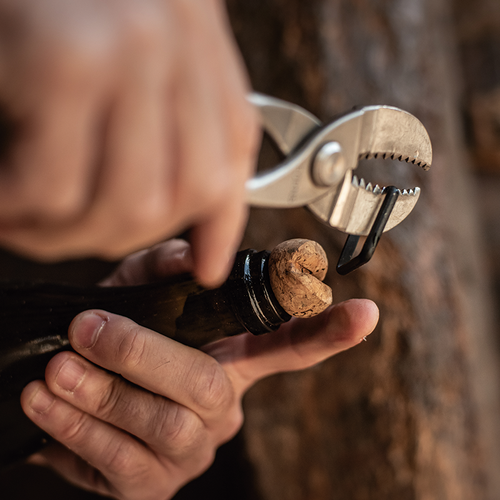
Part of the final stage in an elaborate Cava-making production process is removing the deposit now contained in the neck of an inverted bottle - disgorgement. Just like riddling, it can be done mechanically, freezing the bottle necks and removing the deposit in a frozen form, or manually. Manual disgorgement, at cellar temperature, bottle by bottle, is pure art and a true sight to behold, but also a display of superb craftsmanship, acquired with years of experience. Straight after disgorgement, bottled are then topped up with “liqueur d’expédition” (also receiving a name of “dosage”). This mixture, typically containing sugar, base wines, grape-based spirits, and sometimes aged wines, helps balance out the acidity, adds roundness and complexity and determines the final level of sweetness in Cava - and in Champagne. The only Cava that is made with no dosage is Brut Nature. Traditionally, liqueur d’expédition is a well-guarded secret of many Cava cellars and at times bottled history and tradition, passed from one generation to another.
Our Cava is now ready to bottle, using, of course, the traditional cork stopper, the genesis of this great sparkling wine. And this is how, from tree to bottle, and from vine to wine, every single step in Cava making is a carefully thought-out one, relying on years of history and tradition and on the artisanal nature of its traditional method of production.

